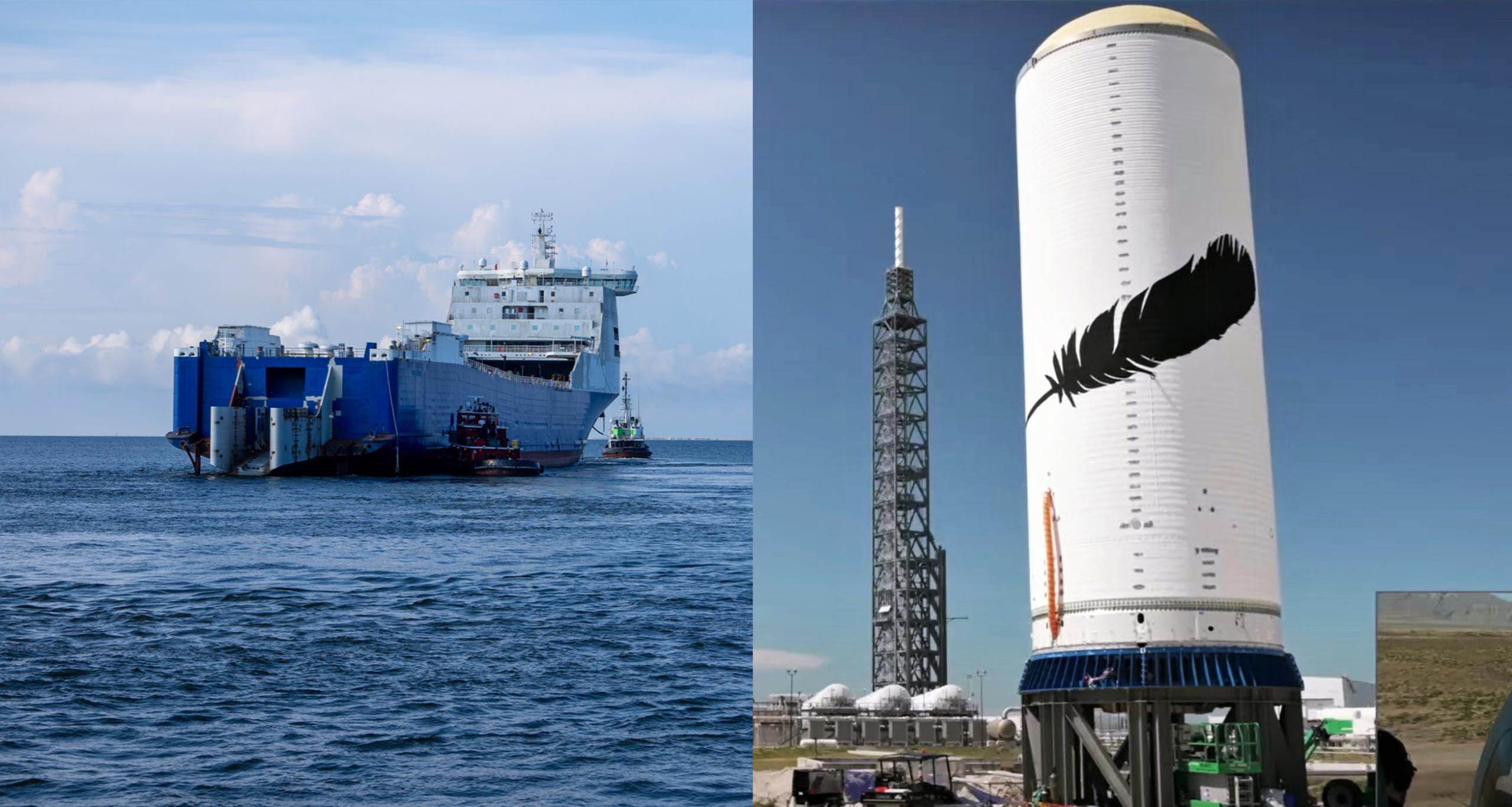

News
Blue Origin scraps New Glenn recovery ship, finishes first ‘test tank’
After four years of halting work, Blue Origin has fully abandoned a transport ship it once intended to convert into a landing platform for its orbital-class New Glenn rocket.
Known as Stena Freighter at the time of sale, Blue Origin purchased the ship for an undisclosed sum – likely several million dollars – sometime in mid-2018. Aside from a flashy, December 2020 re-christening ceremony in which Blue Origin owner Jeff Bezos named the vessel Jacklyn after his late mother, the private aerospace company left the ship largely untouched in a Florida port. Small teams of workers would occasionally work on retrofitting the roll-on/roll-off cargo ship for a future life as a rocket recovery asset but made very little visible progress despite working on Jacklyn for several years.
Now, a few months after a Blue Origin spokesperson first acknowledged that the company was evaluating “different options” for New Glenn booster recovery, Jacklyn has left Florida’s Port of Pensacola for the Texan Port of Brownsville, where documents show that the ship will be scrapped.
According to an unconfirmed report, Blue Origin may ultimately use the same contractors as SpaceX to turn existing barges into ocean-going rocket-landing platforms. Blue Origin had hoped that a large, keeled ship would allow it to launch New Glenn and still recover its expensive booster even if seas were stormy downrange. However, after 107 successful SpaceX Falcon booster landings on flat-bottomed barges that are exceptionally sensitive to wave conditions, just a tiny fraction of launches have been delayed by the ocean. Further, SpaceX has only lost one booster to waves, and it solved that problem by developing a relatively cheap robot. With the benefit of hindsight, it’s not hard to see why Blue Origin changed its mind.
Much like SpaceX’s next-generation Starship rocket, Blue Origin began work on its semi-reusable New Glenn rocket in the early 2010s. Jeff Bezos publicly revealed New Glenn just a few weeks before CEO Elon Musk’s long-planned September 2016 reveal of SpaceX’s next rocket, then known as the Interplanetary Transport System (ITS). Both were massive, meant to be powered by huge new methane/oxygen-fueled engines, and designed from the ground up with some degree of reusability in mind.
But with fairly different designs and wildly different development philosophies, the paths of Blue Origin and SpaceX have only gotten further apart over the last six years. SpaceX thoroughly redesigned its next-generation rocket multiple times before throwing out a large portion of that prior work and settling on an unexpected stainless steel variant that CEO Elon Musk christened Starship in late 2018. Further differentiating the companies, SpaceX began work on steel prototypes almost immediately and successfully built and flew a scrappy pathfinder – powered by an early version of the same Raptor engine meant for Starship – less than a year later.
SpaceX then improvised a factory out of a series of tents and began churning out and testing dozens of more refined prototypes, seven of which would go on to perform flight tests between August 2020 and May 2021. SpaceX’s last test flight ended with a full-size steel Starship prototype successfully landing after launching to an altitude of 10 kilometers (~6.2 mi). Testing slowed considerably after that success but SpaceX appears to have begun ramping up again as it begins to test a Starship (S24) and Super Heavy booster prototype (B7) that have a shot at supporting the rocket’s first orbital launch attempt.
That orbital launch debut has been more or less continuously delayed for years and is about 20 months behind a tentative schedule Musk first sketched out (albeit for a drastically different rocket design) in 2016. Technically, the same is true for Blue Origin, which also said that it intended to debut New Glenn as early as 2020. However, while SpaceX can point to the instability of Starship’s design before 2019 as a fairly reasonable excuse for delays, the general characteristics of New Glenn’s design appear to be virtually unchanged despite its many delays. The smaller rocket – 7m (23 ft) wide and 98m (322 ft) tall to Starship’s 9m (30 ft) width and ~119m (~390 ft) height – will still use traditional aluminum alloys for most of its structures, will be powered by seven BE-4 engines, will land on several deployable legs, will have an expendable upper stage powered by two BE-3U engines, and will be topped with a large composite payload fairing.
Blue Origin canceled plans for a smaller interim fairing, abandoned plans to land the booster on a moving ship, and tweaked the booster’s landing legs and a few other attributes, but New Glenn is otherwise (visibly) unchanged from its 2016 reveal. Ultimately, that makes it even stranger that Blue Origin has done practically zero integrated testing of any major New Glenn components. Only in 2022 did the company finally complete and test a New Glenn payload fairing. Blue may have also built and tested a partial booster interstage, which the New Glenn upper stage will attach and deploy from.
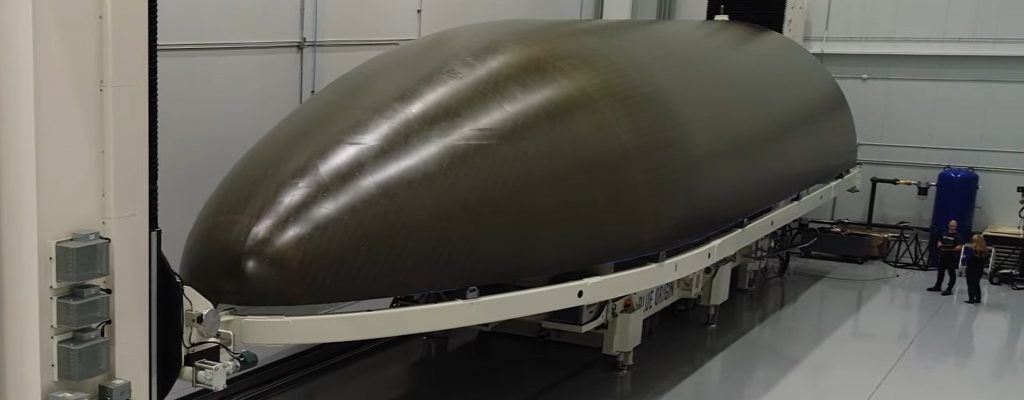
But the true star of the show, at long last, is an apparent full-scale prototype of New Glenn’s upper stage. At minimum, Blue Origin’s first ‘test tank’ (using SpaceX parlance) should allow the company to finally verify the performance of New Glenn’s aluminum tank barrel sections and domes under cryogenic (ultra-cold) conditions. It’s unclear how (or if) Blue Origin intends to complete integrated static-fire testing of New Glenn’s upper stage before the rocket’s first launch, but it’s possible that the tank it finally delivered was designed to support testing with and without engines.
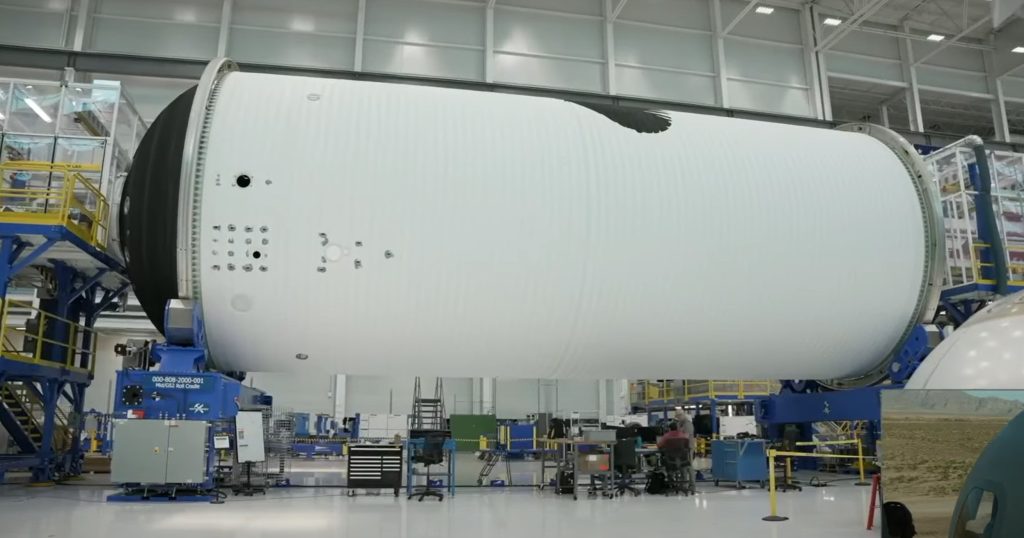
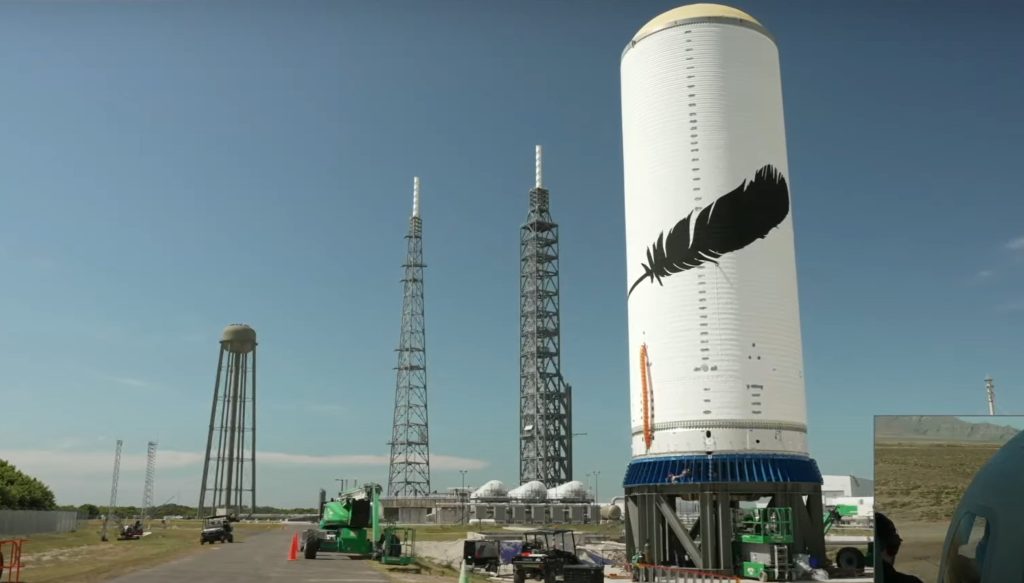
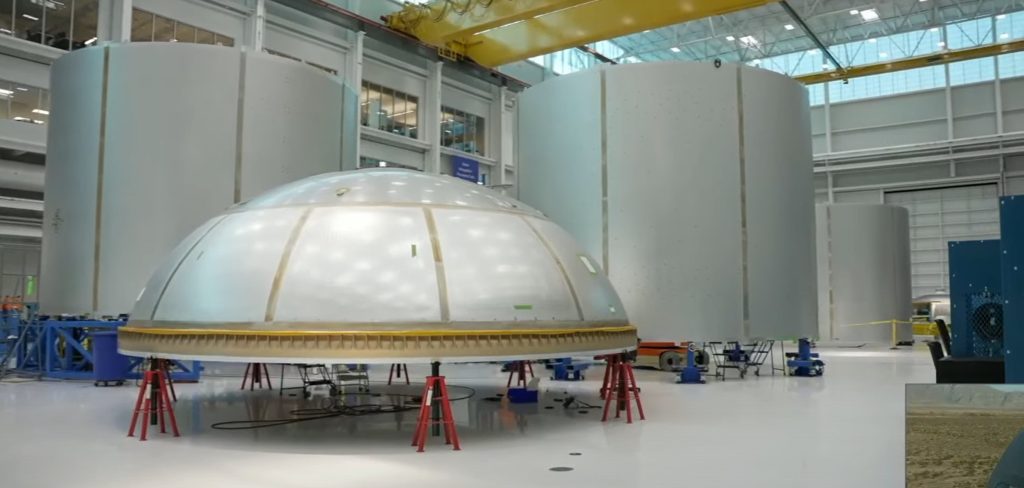
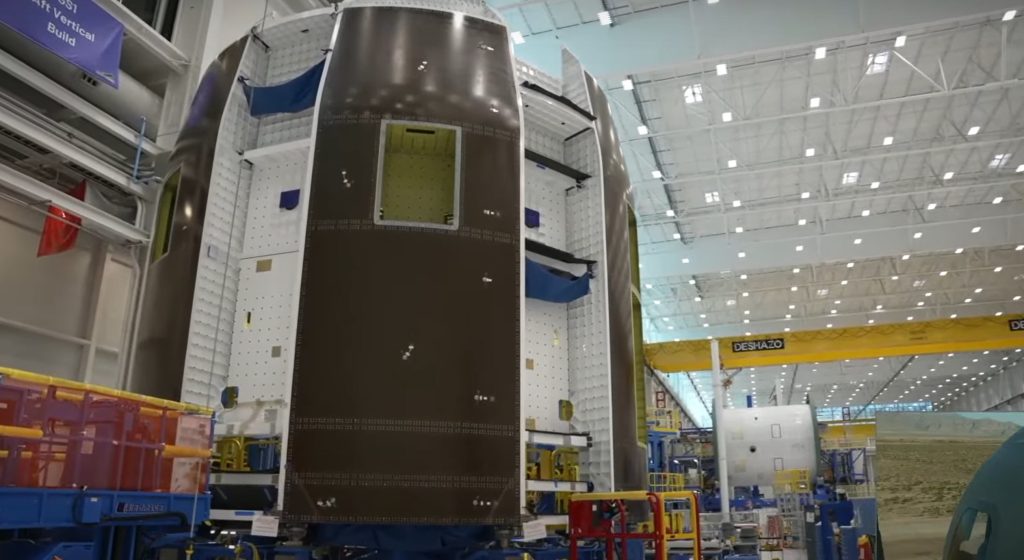
Nonetheless, Blue Origin hasn’t specified what it actually plans to do with its first New Glenn test tank and it’s even less clear why it has taken the company so long to complete one. While difficult, the methods Blue Origin is using to build New Glenn’s primary structures are about as standard as they get for modern rockets. Blue Origin itself even uses the same tech to build its smaller New Shepard rockets. So does SpaceX, ULA, Boeing, Arianespace, and virtually every other manufacturer of medium-to-large rockets, including NASA’s Space Launch System (SLS) core stage, which is wider than New Glenn.
The results of those challenges (managerial, technical, or otherwise) are clear: Blue Origin is nowhere close to debuting its next-generation rocket while competitors like Arianespace and ULA are tracking towards H1 2023 debuts of their Ariane 6 and Vulcan rockets. SpaceX, who is pursuing full reusability and really only settled on the design of its larger rocket in 2019, could even be ready to attempt an orbital-class launch with Starship before the end of 2022.
Still, the long-awaited beginning of hardware-rich New Glenn development appears to have finally arrived, and it’s possible that Blue Origin’s first orbital-class rocket could finally start picking up momentum towards its launch debut.
News
Tesla cleared in Canada EV rebate investigation
Tesla has been cleared in an investigation into the company’s staggering number of EV rebate claims in Canada in January.

Canadian officials have cleared Tesla following an investigation into a large number of claims submitted to the country’s electric vehicle (EV) rebates earlier this year.
Transport Canada has ruled that there was no evidence of fraud after Tesla submitted 8,653 EV rebate claims for the country’s Incentives for Zero-Emission Vehicles (iZEV) program, as detailed in a report on Friday from The Globe and Mail. Despite the huge number of claims, Canadian authorities have found that the figure represented vehicles that had been delivered prior to the submission deadline for the program.
According to Transport Minister Chrystia Freeland, the claims “were determined to legitimately represent cars sold before January 12,” which was the final day for OEMs to submit these claims before the government suspended the program.
Upon initial reporting of the Tesla claims submitted in January, it was estimated that they were valued at around $43 million. In March, Freeland and Transport Canada opened the investigation into Tesla, noting that they would be freezing the rebate payments until the claims were found to be valid.
READ MORE ON ELECTRIC VEHICLES: EVs getting cleaner more quickly than expected in Europe: study
Huw Williams, Canadian Automobile Dealers Association Public Affairs Director, accepted the results of the investigation, while also questioning how Tesla knew to submit the claims that weekend, just before the program ran out.
“I think there’s a larger question as to how Tesla knew to run those through on that weekend,” Williams said. “It doesn’t appear to me that we have an investigation into any communication between Transport Canada and Tesla, between officials who may have shared information inappropriately.”
Tesla sales have been down in Canada for the first half of this year, amidst turmoil between the country and the Trump administration’s tariffs. Although Elon Musk has since stepped back from his role with the administration, a number of companies and officials in Canada were calling for a boycott of Tesla’s vehicles earlier this year, due in part to his association with Trump.
News
Tesla Semis to get 18 new Megachargers at this PepsiCo plant
PepsiCo is set to add more Tesla Semi Megachargers, this time at a facility in North Carolina.

Tesla partner PepsiCo is set to build new Semi charging stations at one of its manufacturing sites, as revealed in new permitting plans shared this week.
On Friday, Tesla charging station scout MarcoRP shared plans on X for 18 Semi Megacharging stalls at PepsiCo’s facility in Charlotte, North Carolina, coming as the latest update plans for the company’s increasingly electrified fleet. The stalls are set to be built side by side, along with three Tesla Megapack grid-scale battery systems.
The plans also note the faster charging speeds for the chargers, which can charge the Class 8 Semi at speeds of up to 1MW. Tesla says that the speed can charge the Semi back to roughly 70 percent in around 30 minutes.
You can see the site plans for the PepsiCo North Carolina Megacharger below.

Credit: PepsiCo (via MarcoRPi1 on X)

Credit: PepsiCo (via MarcoRPi1 on X)
READ MORE ON THE TESLA SEMI: Tesla to build Semi Megacharger station in Southern California
PepsiCo’s Tesla Semi fleet, other Megachargers, and initial tests and deliveries
PepsiCo was the first external customer to take delivery of Tesla’s Semis back in 2023, starting with just an initial order of 15. Since then, the company has continued to expand the fleet, recently taking delivery of an additional 50 units in California. The PepsiCo fleet was up to around 86 units as of last year, according to statements from Semi Senior Manager Dan Priestley.
Additionally, the company has similar Megachargers at its facilities in Modesto, Sacramento, and Fresno, California, and Tesla also submitted plans for approval to build 12 new Megacharging stalls in Los Angeles County.
Over the past couple of years, Tesla has also been delivering the electric Class 8 units to a number of other companies for pilot programs, and Priestley shared some results from PepsiCo’s initial Semi tests last year. Notably, the executive spoke with a handful of PepsiCo workers who said they really liked the Semi and wouldn’t plan on going back to diesel trucks.
The company is also nearing completion of a higher-volume Semi plant at its Gigafactory in Nevada, which is expected to eventually have an annual production capacity of 50,000 Semi units.
Tesla executive teases plan to further electrify supply chain
News
Tesla sales soar in Norway with new Model Y leading the charge
Tesla recorded a 54% year-over-year jump in new vehicle registrations in June.

Tesla is seeing strong momentum in Norway, with sales of the new Model Y helping the company maintain dominance in one of the world’s most electric vehicle-friendly markets.
Model Y upgrades and consumer preferences
According to the Norwegian Road Federation (OFV), Tesla recorded a 54% year-over-year jump in new vehicle registrations in June. The Model Y led the charge, posting a 115% increase compared to the same period last year. Tesla Norway’s growth was even more notable in May, with sales surging a whopping 213%, as noted in a CNBC report.
Christina Bu, secretary general of the Norwegian EV Association (NEVA), stated that Tesla’s strong market performance was partly due to the updated Model Y, which is really just a good car, period.
“I think it just has to do with the fact that they deliver a car which has quite a lot of value for money and is what Norwegians need. What Norwegians need, a large luggage space, all wheel drive, and a tow hitch, high ground clearance as well. In addition, quite good digital solutions which people have gotten used to, and also a charging network,” she said.
Tesla in Europe
Tesla’s success in Norway is supported by long-standing government incentives for EV adoption, including exemptions from VAT, road toll discounts, and access to bus lanes. Public and home charging infrastructure is also widely available, making the EV ownership experience in the country very convenient.
Tesla’s performance in Europe is still a mixed bag, with markets like Germany and France still seeing declines in recent months. In areas such as Norway, Spain, and Portugal, however, Tesla’s new car registrations are rising. Spain’s sales rose 61% and Portugal’s sales rose 7% last month. This suggests that regional demand may be stabilizing or rebounding in pockets of Europe.
-

 Elon Musk2 weeks ago
Elon Musk2 weeks agoTesla investors will be shocked by Jim Cramer’s latest assessment
-

 Elon Musk2 days ago
Elon Musk2 days agoxAI launches Grok 4 with new $300/month SuperGrok Heavy subscription
-

 Elon Musk4 days ago
Elon Musk4 days agoElon Musk confirms Grok 4 launch on July 9 with livestream event
-

 News1 week ago
News1 week agoTesla Model 3 ranks as the safest new car in Europe for 2025, per Euro NCAP tests
-

 Elon Musk2 weeks ago
Elon Musk2 weeks agoA Tesla just delivered itself to a customer autonomously, Elon Musk confirms
-

 Elon Musk1 week ago
Elon Musk1 week agoxAI’s Memphis data center receives air permit despite community criticism
-

 News2 weeks ago
News2 weeks agoXiaomi CEO congratulates Tesla on first FSD delivery: “We have to continue learning!”
-

 Investor's Corner2 weeks ago
Investor's Corner2 weeks agoTesla gets $475 price target from Benchmark amid initial Robotaxi rollout

















